Borderlands 2 Preview: The Right to Bear Arms
Lots of changes to get excited about, but Borderlands is still as gloriously violent as ever.
GTA comes close but, if you ask me, no game gets under the skin of America quite like Borderlands. That's why - Badass Fire Skags aside - dropping in on Pandora can feel a little like visiting Arizona, or New Mexico, or the red plains of Utah. Gearbox's endlessly replayable shooter-looter resembles a yard sale in the south west states grown vast and ungainly. It's where the pioneer spirit meets the get-rich-quick mentality, where trailer trash quest-givers greet you in front of a clapboard outhouse, and where the sequel's new villain, Handsome Jack, is a cross between a Roger Ramjet second-stringer and Abraham Lincoln's meaner, cooler younger brother.
Take away the purple skies and city-sized drilling rigs and you're in the dusty America of Steinbeck and Andrew Wyeth, but Borderlands also understands the lurid, gleefully tacky homeland of Billy Mays Jr (RIP) and John Carpenter. The end result's crass and canny and terminally run down, and the whole thing revolves around life, liberty, and the pursuit of guns.
Because in Borderlands, guns mean happiness. That's whether they're dropping from the bodies of downed bandits, or glinting inside the chilled confines of those over-engineered crates you stumble across every five minutes. Vault hunters are lured to Pandora by the promise of riches, but they're paid - and convinced to stick around - with the weapons that come their way in endless torrents: the toxic shotguns, electrical SMGs, explosive repeaters, and crit-casting rocket launchers. Late on in my adventures in the original game, I found an eight-chambered shotgun that set almost all my enemies on fire and reloaded in milliseconds. I still think of it sometimes. I'm surprised I don't have a faded Polaroid of it on my fridge, actually.
So put aside Borderlands 2's new plot (briefly stated, there's a new baddie knocking around named Handsome Jack, and as boss of the Hyperion Corporation, he's ready to give everyone a hard time), the refreshed classes, and all of the happy little tweaks we'll get to later. All you really need to know about the sequel is that, faced with the latest demo build, it took me about five minutes to find a new favourite gun. It was a Dahl SMG that chucked out electrical damage, and it fired its shallow clips in sharp little bursts that tore through Pandoran wildlife with a wonderfully nasty efficiency. Suddenly, I could love again.
I thought I'd stick with it forever, frankly, but wait! What's this? A Tediore shotgun? Click-click-click-click-BOOM. Four bullets, and then you chuck the cheap piece of crap at an enemy whereupon it explodes, while a new model warps into your hands to last for another five seconds. Disposable guns. Guns that are also grenades. Borderlands, I've missed you.
This, then, is how Gearbox is approaching weapons iteration in a series that has already given you fifteen bajillion pieces of hardware to choose from. This time, the manufacturers really count. Dahl offers military grade efficiency. Tediore is the naff Gilette razor of ballistics, and Jakobs provides a taste of the old West, as I discovered when I picked up a gilt-tooled twin-barrelled shotgun with a scope and a hefty kickback. Shotguns with scopes! Shotguns with gilt! Borderlands, I've missed you.
So in Borderlands 2, the guns you pick up will feel really different from the word go, whether you're packing a Vladof sniper or a Maliwan machine pistol. You'll come to understand the kinks and quirks of the different companies that make them, and hopefully, you'll pick a favourite and stick with it. But that's not all that's changed, of course.
The four new hero characters represent four new - or mostly new - classes, too. Salvador replaces Brick as the Gunzerker (rather than Berzerker) and Maya swaps out the siren's phasewalking for phaselocking, a new magic skill that sees you grabbing your enemies in an energy field and holding them up in the air. Elsewhere, Axton looks like the latest turret-wielding all-rounder, and Zero's an enigmatic robot assassin who can throw decoys onto the battlefield as he gets in close with a blade. Ouch.
Only Maya and Salvador are available in the current build, but they're emblematic of the main changes Gearbox is making as far as all classes are concerned. Each character still comes with a single action skill and a trio of talent trees, but they seem far more fiercely differentiated this time, and the little loops of murder that you could spend an entire game finding in the first Borderlands seem to pop up a lot more regularly.
Take Lilith, the original siren, as an example. It took me about eight hours of grind to get her where I wanted her to be - a stealth killer who regained health when she phasewalked and then popped up behind people with a brisk little explosion - and then she pretty much stayed that way for the next 80 hours.
With Maya, I find a neat new tactic within ten minutes: phaselock a distant enemy, yank it out of cover, and then throw my latest Tediore at it until it pops. In another ten minutes, I've found another, and then another. I'm lost within a tangle of skill branches and working my way towards big ticket items like the ability to turn foes against each other or heal wounded team-mates by, you know, shooting them.
Salvador's equally interesting: a squat little hardman with a complex quiff and an action skill that allows him to dual-wield for a brief period. The hilarious thing, of course, is that he can dual-wield anything - a shotgun and pistol, a pistol and a rocket launcher, two rocket launchers - while a quick shimmy through his skill trees sees you boosting melee damage through the roof and earning combo bonuses for swapping weapons in and out quickly.
Elsewhere, this is the Borderlands you already know and love, but with refinements both large and small. The tiny stuff can actually feel strangely significant, too. Ammo and money is now collected automatically as you pass by, for example, allowing you to focus on the choices that are actually interesting, like the guns and the grenade mods, while you'll now return to iron sights if you keep the left-trigger held down when reloading, and you'll come across certain shields that have their own special powers, such as the ability to deal an electrical blast if somebody melees you. Higher up the scale, you get dynamic quests with objectives that change during the course of the action, and AI that now has a little more going on than simply standing in front of you and unloading clips.
If anything, this is the element that really changes the feel of the action the most. Borderlands combat has always been a little chaotic - it's a game about getting into the middle of things and squeezing the trigger again and again until all you hear is an empty-chambered click.
Now, though, with the addition of flying drones that heal other enemies, enemies that call in reinforcements, and enemies that wriggle under the ground like nasty little Bugs Bunnies and then burst out beneath your team-mates, you'll really need to prioritise targets a lot more often. Borderlands 2 keeps that same panicky feeling as you round a corner into a courtyard filled with space slugs and clanking droids, but it layers on a little order, too, in other words, and the whole thing feels enhanced because of it.
On top of that, you can now target limbs, meaning you can shoot a killer robot's gun arms off if you don't have the time to blow it to pieces completely, and I'm sure that I briefly saw some of the new Hyperion enemies laying into some of the new organic nasties. There's a brilliant new thing called a Needle Stalker that looks like a dinky Cloverfield monster and flings poison at you from a spore in its tail, suggesting that there may be tactical advantages lurking within pitting foe against foe in certain circumstances. Or it may just be a bug, of course.
Two hours of playing left me with so much that's new. Old character classes are now major quest-givers, for example, and a fight through a craggy wildlife reserve saw me on a mission to rescue Mordecai's Bloodwing, while an indoor environment called the Caustic Caverns offered a sense of scale no previous Borderlands locations could match.
Beyond all that, though, the game brings with it a prevailing sense that the beautifully mindless core of the experience remains undamaged. Borderlands is still about second winds, sudden riches, and laughing so hard that you almost choke. It's still about dancing robots, patch-worked blacktop, and the ragged edge of the American dream.
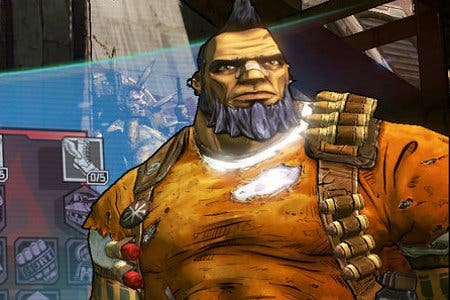


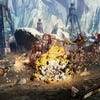
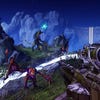




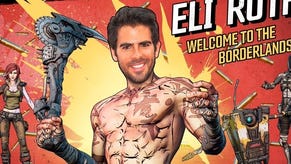
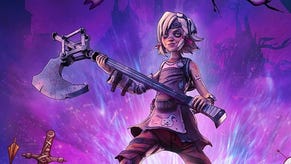
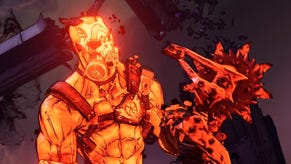
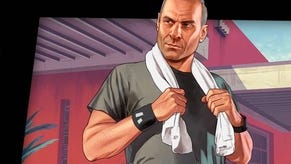





.png?width=291&height=164&fit=crop&quality=80&format=jpg&auto=webp)



